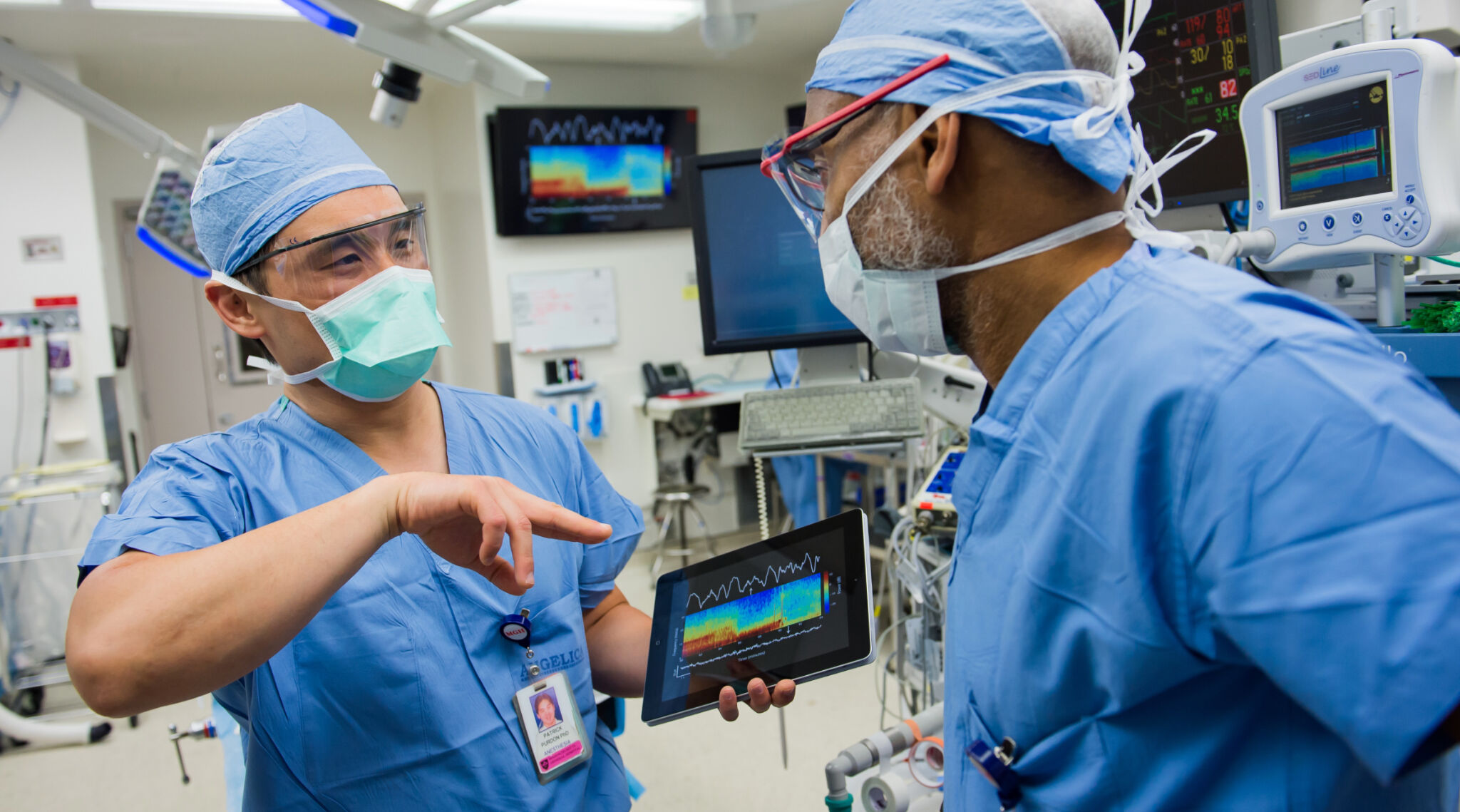Clinical Education

A growing body of research is demonstrating a new way of thinking about the electroencephalogram (EEG) that establishes easily recognizable “EEG signatures” and dose-response patterns for most of the major anesthetic drugs used to achieve sedation or unconsciousness. Crucially, these EEG signatures have a direct link to the underlying mechanisms of how these drugs act on the brain to promote sedation and unconsciousness. Using this approach, we believe that it is possible to deliver personalized anesthesia care for patients through the use of the EEG.
This website was developed to provide access to videos, tutorials, and other tools to help educate clinicians on how to use the EEG waveform and spectrogram to assist in anesthesia management.
Visit our YouTube channel EEG for Anesthesia to watch a series of short animated videos introducing essential concept of using the EEG for anesthesia management.
You can also view these videos on this site by clicking button below. Each videos is about 5 minutes in length.
EEG for Anesthesiology - Part 1: Introduction to the EEG for Anesthesiology
EEG for Anesthesiology - Part 2: The EEG Waveform and Spectrogram
EEG for Anesthesiology - Part 3: Propofol
EEG for Anesthesiology - Part 4: Inhaled Ether-derived Anesthetics
These courses are intended to train professionals on the basics of using the EEG to recognize the altered states of arousal caused by commonly used anesthetic drugs.
Visit EGG for Anesthesia for online courses offering CME.
Hosted by the IARS and powered by SelfStudyPLUS
Developed by Patrick L. Purdon, PhD, Christopher A. Colvin, MHSc, & Emery N. Brown, MD, PhD
- Clinical Electroencephalography for Anesthesiologists Part 1: Background and Basic Signatures
- Electroencephalogram Signatures of Loss and Recovery of Consciousness from Propofol
- The Ageing Brain: Age-dependent Changes in the Electroencephalogram During Propofol and Sevoflurane General Anesthesia
- Intraoperative Burst Suppression is Associated with Postoperative Delirium Following Cardiac Surgery: A Prospective, Observational Study
- Intraopertive Electroencephalogram Suppression Predicts Postoperative Delirium
Additional Publications
- General Anesthesia, Sleep, and Coma
- Ageing Delays Emergence from General Anaesthesia in Rats by Increasing Anaesthetic Sensitivity in the Brain
- Burst-Suppression Ratio Underestimates Absolute Duration of Electroencephalogram Suppression Compared with Visual Analysis of Intraoperative Electroencephalogram
- Effects of Sevoflurane and Propofol on Frontal Electroencephalogram Power and Coherence
Teaching modules for anesthesiologists concerning EEG and its application in the OR setting.
